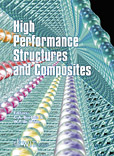Reinforced Concrete Specimensretrofitted By Carbon Cloth Submitted To Localisedloading
Price
Free (open access)
Transaction
Volume
59
Pages
6
Published
2002
Size
258 kb
Paper DOI
10.2495/HPS020281
Copyright
WIT Press
Author(s)
J.-L. Clement, K. Verok & C. Boulay
Abstract
One of the use of FRP to reinforced some RC elements consist to retrofit the top of bridge pile. These elements are subjected to localised pressures. Their RC design consist to calculate an axial stress which takes into account the retrofitting effect given by the reinforced steel bars. A previous study has shown that m the case of HPC concretes, the security coefficient is lower than in the case of ordinary concrete. So we have choose to retrofitted concrete specimen, which are reinforced by steel bars or no, using FRP. The carbon cloth (TFC) is glued on the external surface of 20*20*60 cm3 specimen, after surface preparation. The load is applied on a 10*10 cm2 surface, and increases until failure. The tests are performed using a 5000 kN test machine, with longitudinal et transversal displacement measurements. h the case of RC elements, some strain gauges are glued on transversal steel bars, and on FRP too in the case of retrofitted specimens. We present first of all the experimental program, then the main results. The results analyse enables us to conclude than is it possible to use this kind of technique in order to strength some cylindrical bridge piles: The rupture of the concrete elements concrete is relatively brutal. That of the elements retrofitted by composites is much more ductile. This work belongs to the LCPC's research operation \“strengthening and repairing of reinforced or pre stressed structural elements using carbon fibre cloth”.
Keywords





